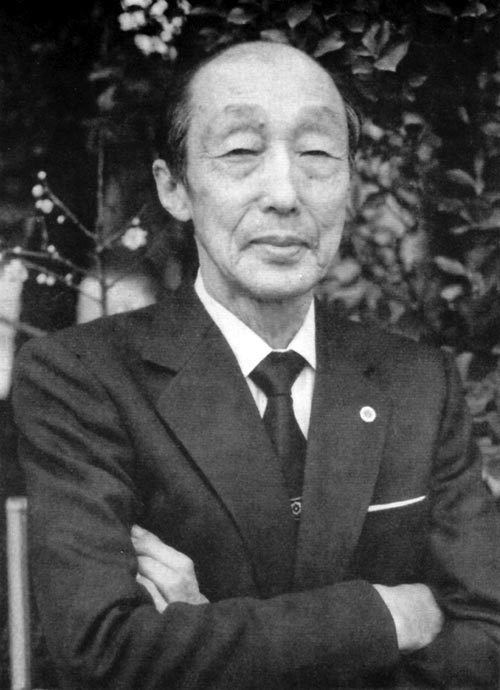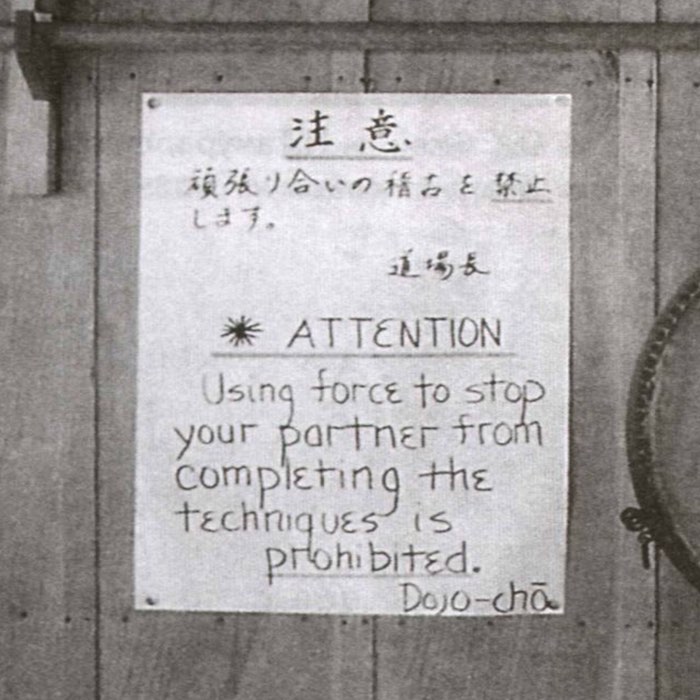This time our quote that needs to die is, “There are no rules in aikido”.
While there are many incorrect quotes about aikido, some are worse than others. This particular quote is a prime example of why you should never trust what someone says without checking it for yourself.* At the very least, you should give some thought to what they are telling you, and consider a slightly wider picture of things.
Origins
It’s not the easiest to determine where this quote began it’s life. It’s heard in dojo all around the world, but there doesn’t seem to be a known instance of who said it first. It may be the product of an amalgamation of quotes from O Sensei. It could also be the consequence of that other often uttered gem, “There is no competition in aikido”.
Regardless of where it came from it has spread itself far and wide and is, sadly, very wrong.
No Competition Therefore No Rules
This quote is often stated in the context of aikido lacking competition. You may hear a variation of, “There are no rules because there is no competition”. The major problem with that is at least two styles of aikido very definitely have competition. They have world championships and everything. The competition aspects of those styles of aikido absolutely have rules:


The simple existence of these competitive styles, and the accompanying rules, start to cast doubt on the quote. They are an undeniable, immediate, and obvious example of aikido having rules. There are many others though.
It Is Not a Free For All
Whether you acknowledge it or not normal aikido training is very structured. You can walk into almost any aikido dojo in the world and know exactly what training will look like. There will be some gentle variations along the curve of standardisation but for the most part, it’s all the same. The point here is that you cannot turn up to class and do whatever you like. There is a definite learning structure and accepted system of training.
Often, you find these rules written down. Most dojo have an etiquette/ dojo rules section somewhere on their website or brochure. You are expected to follow these rules. They help provide structure to the training and prevent needless injury.

Typical examples include:
- How to line up for demonstrations
- What to wear on the mats
- How you should practice with a partner
- What to do if you are late
- References to how/ when you can use aikido outside the dojo
Training in aikido is not a free for all, you cannot simply do what you like. There are rules to training and you have to follow them.
What They Really Meant
All of the above is true, there are very obvious rules in aikido. However, it’s slightly disingenuous to use those arguments against this quote. To be fair, the context of the quote is almost always used in relation to a physical confrontation outside the dojo and normal training. A street fight is what’s usually meant.
This quote is very popular in that context. If you spend any time on martial arts forums on the internet you’ll go about 5 minutes before you hear somebody say, “There are no rules on the streets.” The problem with that, and it’s identical for aikido, is that there are a great many rules that apply to real world violence.

Street Rules
The first thing to realise is that while the potential is there, the vast majority of street altercations do not end in death or serious injury. In most cases, all combatants leave relatively intact. If there are no rules at all, then it’s likely that wouldn’t be the case. Fights end, seemingly, because they either get broken up, or someone ‘loses’, meaning someone ‘won’. The winner may have decided to stop attacking for some reason. Perhaps the other person ran away, or capitulated. Bystanders may have interfered to break the fight up. Regardless of the reason, the fighters reach a point where at least one has decided, ‘enough’. The fight ends because a stopping point has arrived. There were rules that helped them arrive at this point.
When we consider the rules of a street fight we can break them down into two distinct categories. Written and unwritten.
Written Rules
There are a lot of these. There really are. You just have to figure out where to look. For instance, in the UK you should start with Section 76 of the Criminal Justice and Immigration Act 2008. This provides the legal framework for self-defence, and clarification of the existing common law and statutory defences. It took less than two minutes to find those rules.
You can find the written rules of street fighting in the laws of the country you are currently in. People have been fighting each other since the dawn of our species and tribes, civilisations, and nations have been regulating it for just as long.
There are usually very clear written rules on what you can and cannot do in a violent encounter should one occur.

Unwritten Rules
In a surprise to no-one, these rules are much harder to find, and yet you already know them. These are the rules that we learn as children. Growing up with our peers, we occasionally break into violence. These altercations on the playground are where we discover the rules of what we can and cannot do. We learn what is acceptable in a situation and what is not. There are, of course, enormous external influences on this, from adults, to society, to school rules.
These influences generally seem to carry through later life. An example of this could be that men, in general, do not pull hair in a fight with other men. Despite the obvious utility of this, it just doesn’t seem to happen. If you search YouTube for fights that involve hair pulling it’s almost exclusively women.
An Aikido Example
Another example though, and one that is aikido related, is the lack of death from aikidoka defending themselves. You’ve probably heard, at some point, that you can use all the techniques in aikido to kill or cripple another person. That’s a highly debatable argument, but regardless, let’s consider irimi nage. In the majority of styles the outcome of irimi nage, done to completion, is the opponents skull making contact with the pavement before any other part of their body. This will likely be at a very high speed as well. The potential for lethal damage is quite high from that technique, and from several others as well.
Two Possibilities
Aikidoka are just like other people. We get into fights from time to time, but we have a martial ability that we can deploy to help us. Many aikidoka have experience of using aikido to defend themselves, in a non-dojo setting. This begs the question, ‘Where are the bodies’? Where are the caved in skulls, cracked ribs, mangled wrists, crumpled elbows, and destroyed knees? In this day and age, where you can’t go anywhere or do anything without somebody seeing and recording it, where are the news reports about the killer aikidoka?

There are two feasible answers, the first is that we don’t get into fights. This isn’t true, and very easy to prove. Just ask on any aikido forum if anyone has had to defend themselves using aikido. You will receive many stories in response.
The second is that, somewhere along the line, we’ve learned to restrain ourselves and not go that far. We have absorbed a set of unwritten (and written) rules, that we apply in the situation to make sure we don’t go too far. For the vast majority of aikidoka, the idea of driving someones head into the pavement, with force, is abhorrent. Rightly so, most of us don’t train for that reason.
The rules are there, we know them, and we apply them. Supplementing the ones we learned growing up, we discovered some more in the dojo. We learned the ease with which we could destroy another human, and created moral rules to make sure we wouldn’t. We created chains of iron for our abilities to make sure we never go too far. These rules prevent those news articles from ever being written.
Plenty of Rules
Despite the claim from this quote, there are plenty of rules in aikido. They govern all aspects of it, from how we train, to how we defend ourselves. The rules are there, whether we acknowledge them or not. Of course, just because a rule exists, does not mean it has to be followed. Breaking a rule has consequences though, in one form or another.
There are many rules in aikido, and momentary thought about it will reveal the truth of this. That’s why this quote, needs to die.
*Yes, that even includes everything you’ve read here. Most things can be fact checked, others can be logically reasoned.
If you can afford it, and would like to help out,
consider donating some brain fuel!
Also, if you enjoyed this post you can find further insights in this book.